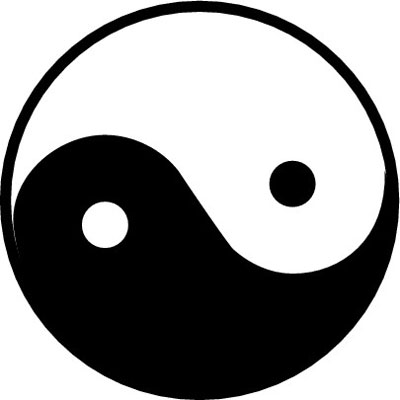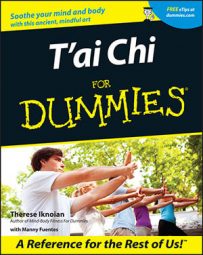T’ai Chi is not only about the movements (or forms), but also about the principles by which you practice the movements. If you tap into the principles properly, you discover the stillness in the movement and, in turn, the energy that flows through your spirit. If you don’t tap into the principles, T’ai Chi becomes nothing but a series of dance steps without a soul.
The list of T’ai Chi principles varies slightly depending on the school, teacher, or style. But if you look and listen closely, you find that the core of any set of T'ai Chi principles is identical.
Principle #1 — Slowing Down: As you do T’ai Chi movements, pretend that you’re the tortoise in the race against the hare. Rushing gets you nowhere — certainly not to a mindful balance and definitely not to enlightenment. Think about what your body is doing and concentrate on what comes next.
Principle #2 — Taking It Easy: Be calm and relax. Holding extra tension in your body means expending extra energy, which you want to avoid in T’ai Chi. Save your energy for when you really need it — during your forms.
Principle #3 — Thinking in Curves: Movement in T’ai Chi is curved and circular, rarely straight and linear. This allows one movement to flow seamlessly into the next. Take a look at the famous yin-yang symbol. The line separating white from black is curved, which represents cycles of change. Straight lines, on the other hand, indicate stagnation.
 The curved, non-stagnated lines of yin and yang.
The curved, non-stagnated lines of yin and yang.Principle #4 — Being Simple: Simplicity boils down to the ability to live fully and naturally, moving and feeling the way that feels best. This ability can be difficult for most people to attain, considering today’s frenzied pace that encourages you to have one eye on tomorrow and your other eye on the cell phone.
Principle #5 — Sinking Lower: Bending your knees to sink lower — one of the keys of good T’ai Chi technique — isn’t just about giving your legs a workout. The demand to sink lower stems from T’ai Chi’s roots in training for martial combat. If you can sink lower than your opponent, you can get beneath his or her center of gravity and turn him or her topsy-turvy. The higher a person stands, the easier he or she is to uproot.
Don't bend your knees to the point of being uncomfortable. T’ai Chi is not about pain. Find a level that isn’t too hard but still challenges you.
Principle #6 — Appreciating Opposites: Remembering the principle of opposites is a good way to keep track of where you are in a form — and perhaps where you should go next. The forms always apply the principle of opposites — forward and back, weight-bearing or non-weight-bearing, force and stillness, high and low, reach and pull back, or lift and lower. You never go forward and then go forward again. A forward move is always followed by some kind of backward move that sort of winds up for the next forward move.
Principle #7 — Staying Balanced: In T'ai Chi and in life, balance applies to everyone both physically and mentally. Physical balance is essential for proper performance of T’ai Chi. T’ai Chi requires and provides not only simplicity, but it also requires and provides balance.
Principle #8 — Moving the Whole Package: Your whole body is one package, and any movement by one body part causes an action or reaction in another part of the body. Think unity, continuity and coordination. Without a unified and continuous coordination of movement, the action becomes disorderly. And you certainly don’t want disorderly T’ai Chi!
Principle #9 — Going with the Flow: T’ai Chi is about continuity and flow, without a break in time or space. Like balance, flow has both physical and mental qualities. Physically, T'ai Chi movement is smooth and uninterrupted. Your legs, feet, and arms reach the final position at the same time, no matter how far they have to travel. But they don’t ever just stop. Mentally, your mind must be placid and able to stay focused and aware of your body.
Principle #10 — Staying Rooted: In T’ai Chi, you want to feel yourself firmly rooted to the ground with every step you take. During T'ai Chi practice, your weight is centered between the ball of your foot and your heel, and squarely between each side.

